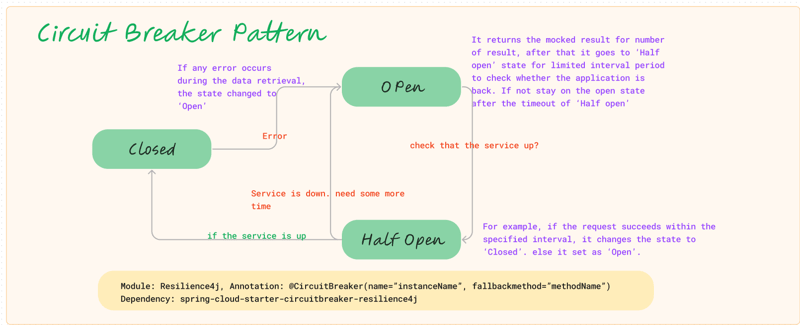Resilience Patterns in Distributed Systems: Handling Transient Failures with Retry and Circuit Breaker Strategies

Hariprasad
Posted on January 28, 2024
Transient Failures: In distributed systems, including microservices, failures are often transient. These can be due to temporary network glitches, short-lived unavailability of a service, etc
Retry Pattern: This pattern is typically used to handle transient failures by retrying the failed operation after a short delay, in the hope that the issue resolves itself quickly. However, excessive retries can lead to resource exhaustion and can compound the problem if the service is already under stress.
Circuit Breaker Pattern:
Preventing Cascade Failures: In a distributed system, if one microservice fails and other services continually try to use it, this can lead to a cascade of failures. A circuit breaker helps prevent this by "opening" and stopping calls to the failing service.
System Resiliency: It enhances system resiliency by allowing failed services time to recover, and it avoids overwhelming a struggling service with further requests.
Fallback Mechanisms: Circuit breakers often provide mechanisms for a fallback action, allowing the system to continue functioning in a degraded state instead of complete failure.

Posted on January 28, 2024
Join Our Newsletter. No Spam, Only the good stuff.
Sign up to receive the latest update from our blog.
Related
January 28, 2024
